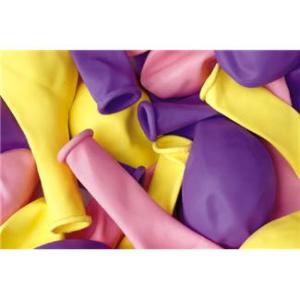The reality of a classroom is that it is often a most dysfunctional environment.
Consider the disparate personalities that are confined in a relatively small space for long periods of time combined with environmental triggers and topped off by utilitarian and uncomfortable furniture. All in all, a recipe for chaos and not an effective learning environment.
 Take a moment to think about one of those bags of party balloons.
Take a moment to think about one of those bags of party balloons.
All shapes and sizes.
Ever tried to blow some of them up?
Some are easy to fill with air and others are particularly difficult.
No matter how hard you huff and puff, they will just not inflate until – just as you are about to give up – they start to stretch a little and …..finally…… when you are exhausted and give one more puff….they fill out to the most magnificent shaped balloon you have seen.
Just like a classroom of students – some are easy to fill with knowledge and are dependable shapes, whilst others present challenges in many ways. It is knowing how to persevere to get an end result that often astonishes all that observe.
Some balloons will resist even the most determined efforts to inflate and need to be put aside to enjoy the others in the packet.
Environmental triggers can also affect a learning environment.
Dust and mould are two common allergens found in most classrooms. School cleaning is often contracted out and a quick vacuum around the floor is often all that is done. Dust settles around the windows and window furnishings and on tops of cupboards and bookshelves.
Mould is a hidden problem and often will manifest with students and teachers having unexplained headaches or coughs in some rooms. It can be found under the floor, in the ceiling or wall cavities.
Another environmental concern is light. Too little natural light and too many fluorescent lights. The fluorescent lights contain mercury (a neurotoxin), and some lights are known to emit an odour which is quite unpleasant. Other odours contributing to a poor learning environment are the excessive use of deodorant sprays and then every so often there is the eye watering, choking SBDF (silent but deadly fart).
How the learning environment is heated or cooled is also important, both from the local and global perspective. Many of the older schools still have gas-fired heating, effective and affordable, but the gas flues need to be regularly checked. Other electrical devices such as computers and wi-fi which are a necessary part of the learning programs need regular safety checks. There is anecdotal evidence to suggest that there may be long-term effects that we are not fully aware of with wi-fi networks.
What the students are eating is another environmental issue, particularly if the school has a canteen. Are they supplying healthy, nutritious food or selling high profit, high fat & sugar products? Is the waste from student lunches and snacks recycled? Students at one school I taught at, had very little regard for either their environment or the local environment and at the end of each day, the school yard looked like a garbage truck had emptied its contents outside the classrooms. Yet another school I have taught at, has a pro-active recycling program and even the food scraps are recycled for the worm farm and the chickens.
Finally, furniture for the learning environment. There are some schools that take this seriously, but most are confined by budgets and the necessity to have utilitarian and long-lasting furniture. The furniture is frequently very uncomfortable although some Primary schools will have a reading area furnished with a comfortable lounge chair or two. Generally the seats are hard, the wrong size for rapidly growing bodies and ergonomically unsound. Would you tolerate the same in your workplace? Then there is the expectation that students will sit still in class, so little wonder that those students who are kinesthetic learners squirm and wriggle when having to sit for a long period of time. How about those students who need movement to learn ? Teachers the world over have encountered the “chair tipper”. It may surprise you to discover that these chair tipping students are innately aware of their need to stimulate their vestibular system and the movement actually helps them to concentrate. More of that in another article or you can contact BrightLight Specialized Education for a list of school workshops for 2011.
 A day late for the actual Equinox which according to the Bureau of Meteorology in Melbourne was at 11.02am on the 20th – the 21st is the Wicca festival of Mabon.
A day late for the actual Equinox which according to the Bureau of Meteorology in Melbourne was at 11.02am on the 20th – the 21st is the Wicca festival of Mabon.
